What is Centrosome?
The centrosome is a cell organelle, serving as the main center for microtubule organization and regulator of the progression of the cell-cycle. It has evolved only in the eukaryotic animal cells, the plants and fungi have other centers for organization of their microtubules.
Centrosomes are composed of two centrioles, situated into the amorphous mass of the pericentriolar material. This material contains proteins, responsible for the microtubule polymerization (microtubule nuclease) and its termination (γ-tubulin, peristrin, and ninene). Each centriole consists mainly of nine triplets of microtubules and contains centrin, tektin, and cenexin.
During the interphase of the cell cycle, the centrosomes are often connected with the nuclear membrane. During the division of the cell (mitosis) this membrane breaks apart, the centrosome’s microtubules interact with the chromosomes and build the mitotic spindle.
The centrosome duplicates once per cell cycle, during the S-phase. Each daughter cell receives one centrosome, containing two centrioles. During the prophase of the mitosis, the two centrosomes migrate to both cell poles and the mitotic spindle forms between them. Centrosomes are mandatory for the survival of the organism, however, the centrioles are not– even without them, the mitosis can proceed normally.
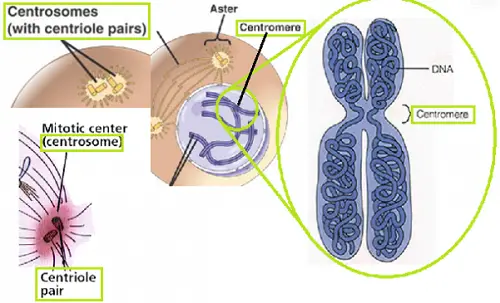
What is Centromere?
The centromere is a constricted region of the chromosome (called primary constriction) where the two identical sister chromatids are connected. It exists in all eukaryotes.
The centromere is the part of the chromosome that determines the formation of the kinetochore – complex structure where the spindle fibers attach to pull the two sister chromatids apart during mitosis.
The kinetochore is divided into:
- Inner kinetochore-associated with the centromere exists through the entire life of a cell,
- Outer kinetochore – interacts with spindle, it is formed only during the division of a cell.
There are two types of centromeres:
- Regional centromeres – usually forming on sections of preferred DNA sequence, but can also form on others;
- Point centromeres –more compact than the regional ones; highly efficient in recognizing particular DNA sequences.
The centromere divides the sister chromatids into two arms, referred to as p- arm (the short one) and q-arm. The centromere can be located in the center of the chromatids, in their end or somewhere in-between. Depending on its location and respectively the length of the two arms of the chromatids there are the following types of chromosomes:
- Telocentric – with very short p-arms (the centromere is situated at the end of the sister chromatids;
- Acrocentric – with p-arms significantly shorter than the q-arms;
- Submetacentric – with similar (but not equal) p and q-arms;
- Metacentric – with identical p and q-arms (the centromere is located exactly in the middle of the chromatids).
Difference Between Centrosome and Centromere
1. Definition Of Centrosome and Centromere
Centrosome: The centrosome is a cell organelle in the eukaryotic animal cells, acting as a center for the organization of the microtubules.
Centromere: The centromere is a constricted region of the chromosome where the two identical sister chromatids are connected.
2. Function of Centrosome and Centromere
Centrosome: The centrosome is the main center for microtubule organization and regulator of the progression of the cell-cycle.
Centromere: The centromere determines the formation of the kinetochore – complex structure where the spindle fibers attach to pull the two sister chromatids apart during mitosis.
3. Occurrence of Centrosome and Centromere
Centrosome: The centrosome exists only in animal eukaryote cells.
Centromere: The centromere exists in all eukaryotes.
4. Number of Centrosome and Centromere
Centrosome: The centrosome duplicates once per cell cycle, during the S-phase. Each daughter cell receives one centrosome.
Centromere: There is one centromere in each linear monocentric chromosome.
5. Composition of Centrosome and Centromere
Centrosome: The centrosome is built from, centrin, tektin, cenexin, and microtubules.
Centromere: The centromere is built from double-stranded DNA (heterochromatin).

Summary of Centrosome and Centromere
- The centrosome is a cell organelle in the eukaryotic animal cells, acting as a center for the organization of the microtubules. It is built from, centrin, tektin, cenexin, and microtubules.
- The centromere is a constricted region of the chromosome where the two identical sister chromatids are connected. It is built from double-stranded DNA (heterochromatin) and exists in all eukaryotes.
- The centrosome is the main center for microtubule organization and regulator of the progression of the cell-cycle.
- The centromere determines the formation of the kinetochore – complex structure where the spindle fibers attach to pull the two sister chromatids apart during mitosis.
- The centrosome duplicates once per cell cycle, during the S-phase. Each daughter cell receives one centrosome. There is one centromere in each linear monocentric chromosome.
Author: Dr. Mariam Bozhilova
Dr. Mariam Bozhilova has a Master’s degree in Ecology and PhD in Botany. Her main professional interests are in the fields of ecology, biology and chemistry. She has more than 10 years of professional experience in scientific research and environmental consultancy.

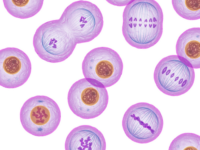
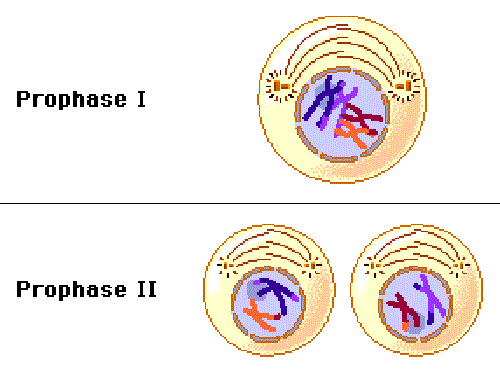
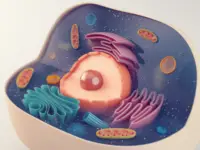
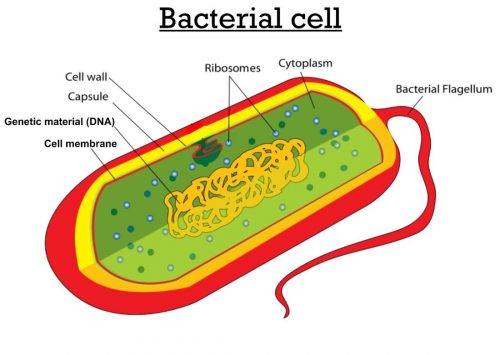
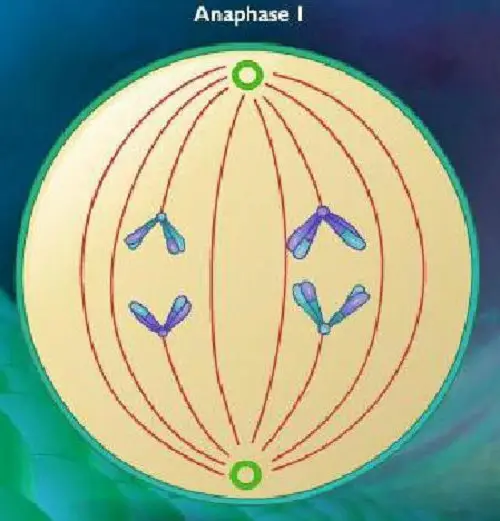
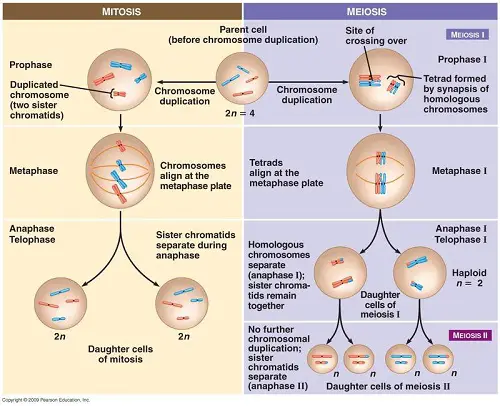





Leave a Reply